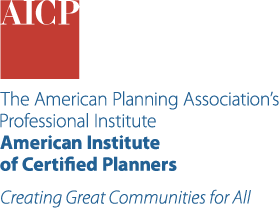July 21, 2025
As planners, we're trained to manage competing interests, perplexing zoning codes, and (often outdated) 300-plus-page comprehensive plans. The expectation is that we are calm, impartial problem-solvers who make sense of the chaos with maps, data, and meticulous analysis.
However, while we've mastered the art of technical solutions, many planners skipped the crash course on how to talk about them. Phrases like "form-based code" and "floor area ratio" aren't usually dropped into everyday conversations — and for good reason. If you've ever watched someone's eyes glaze over at a community meeting, you know what I mean.
Yet today, in a world where every decision is publicly debated in the name of transparency, planners can no longer afford to live in the land of acronyms and policy jargon. Our work, once seen as neutral and a bit nerdy, is now the focus of mainstream media.
As a planning director and former assistant city manager with a background in communications and public relations, I've learned that how planners communicate is just as important as what we're communicating.
Battle-tested strategies
One motto I live by is "Don't play politics, but know the game." (I could write an entire article on that alone.) Translation: We don't have to whip votes or pick sides. But we do need to understand the players, anticipate reactions, and frame our message so it can't be easily twisted, misunderstood, or lost in translation.
So, as you prepare to launch your next planning initiative or city council briefing, here are six battle-tested, communication-savvy strategies to help you master your message.
1. Frame the narrative early and often
If you don't tell your story, someone else will — and chances are, they won't get it right. Whether it's a comprehensive plan update or a controversial code amendment, planners need to lead with clear messaging that's been aligned and approved by leadership. Then repeat it early, often, and consistently until it sticks.
Framing the narrative means leading with the "why," grounding it in community values, and explaining the "how" in plain language. Don't wait until a public hearing to drop a 50-page staff report. Start with bite-sized messaging across multiple platforms like social media, community newsletters, and city-sponsored events.
Consistency and visibility are key!
2. Clear communication is key
Planning jargon might be precise, but it can also be mind-numbing. If your audience needs a glossary to understand your message, you've already lost them. Pro tip: Loop in your communications and marketing pros early. Communication professionals are the secret sauce for turning dense policy messaging into plain language your mom, your neighbor, and your councilmember alike can understand.
If the public doesn't understand what you're doing or why you're doing it, it doesn't matter how masterful your plan is. Clarity builds trust. Confusion builds suspicion.
3. Meet people where they are
Public hearings and open houses will always have their place in the world of planning. However, over half of U.S. adults are getting their news and shaping their opinions on social media.
That means it's time for planners to get comfortable with their inner influencer. No, you don't need to go viral with a TikTok dance (unless you really want to). But a simple "Zoning 101" explainer series or a mock urban design site plan review can go a long way when making planning principles more digestible.
The goal isn't entertainment — it's education. Use every channel at your disposal to make planning more approachable. And don't be afraid to get creative!
4. Mic drop
Planning staff are often asked to walk into tense meetings, give presentations, or speak to the media with little to no training on how to do it well.
There's no time like the present to invest in media, public speaking, and presentation training for planners at every level. Maybe your city has a communications pro you can tap — if not, there's always Toastmasters. Help your team learn how to stay cool under pressure, respond to tough questions, and gracefully steer the conversation back to the facts. Think of it like getting your oil changed; routine maintenance keeps everything running smoothly.
Truth be told, I still get thrown off in unfamiliar speaking settings now and then. But after a good coaching session, I'm reminded that a deep breath and solid prep are usually all it takes to survive a curveball question or an impromptu mic moment.
Also, let junior staff present to elected officials and community groups. It's good practice, builds confidence, and prepares the next generation of leaders. They'll thank you later.
5. Reframe the message, not the mission
When foundational urban planning values like equity or climate change become politically sensitive (or outright restricted), strategic communication becomes essential. This isn't a compromise of principles; it's a reframing to ensure initiatives are heard and acted upon.
Instead of "climate adaptation," try "community resilience" or "disaster preparedness." When "equity" or "inclusivity" raises a red flag, language like "complete communities" or "comprehensive growth" can convey the same intent with broader appeal. These strategies don't dilute our mission; they ensure it reaches the rooms where decisions are made. Language, just like policy, evolves. So should we.
6. Be a planning cheerleader
Yes, I said cheerleader! Planners do incredible work that has real impact, but we're not always so good at sharing our success stories and celebrating community wins. Good planning makes a difference, and we need to make sure the community members and decision-makers we serve know it.
Planners shape how cities grow, how people live, and how communities connect — that's powerful. But with power comes the responsibility of integrity and thoughtfulness. Share your work. Celebrate your wins. Educate your audience. But always anchor your message in people-centric policy, transparency, and long-term community benefit.
Planners don't get to hide in the background anymore. The work we do is too visible, too impactful, and at times can be too controversial. In today's climate, effective communication is critical. We need to understand the political landscape, anticipate reactions, and tailor our message so it's clear, compelling, and hard to twist.
At the end of the day, we're not just planning projects — we're planning for people, for communities, and for the future. That means doing the work and telling the story with courage, consistency, and the kind of clarity that transforms confusion into collaboration. Let's not just plan the future — let's speak for it, too.




